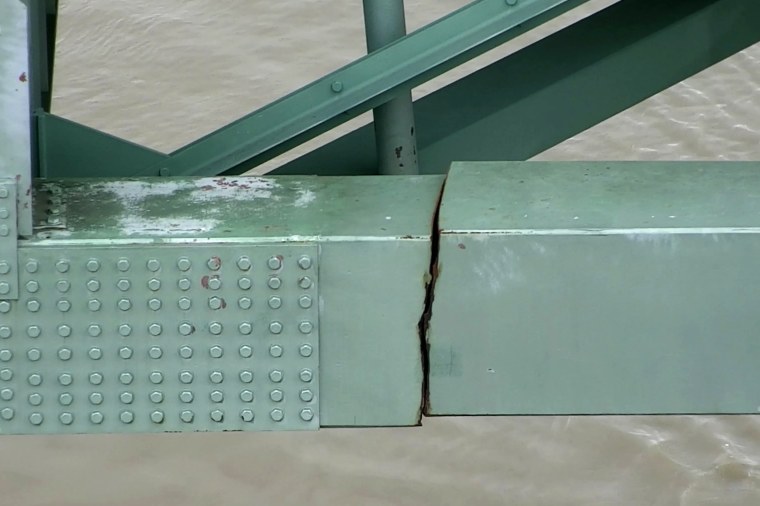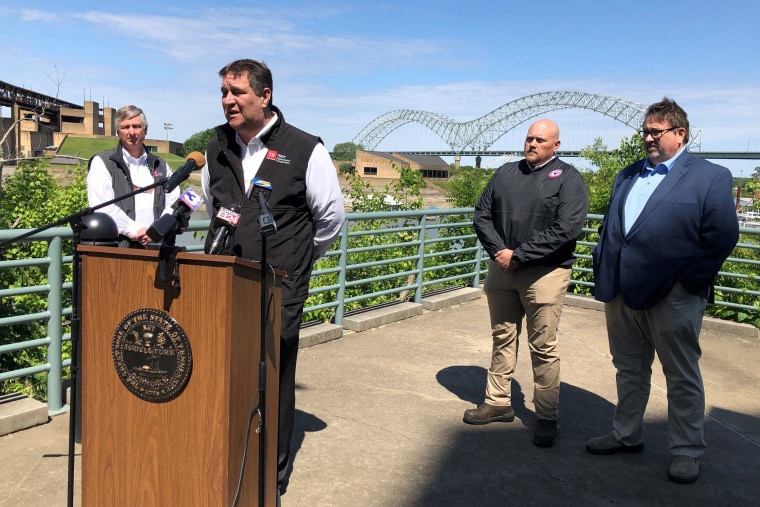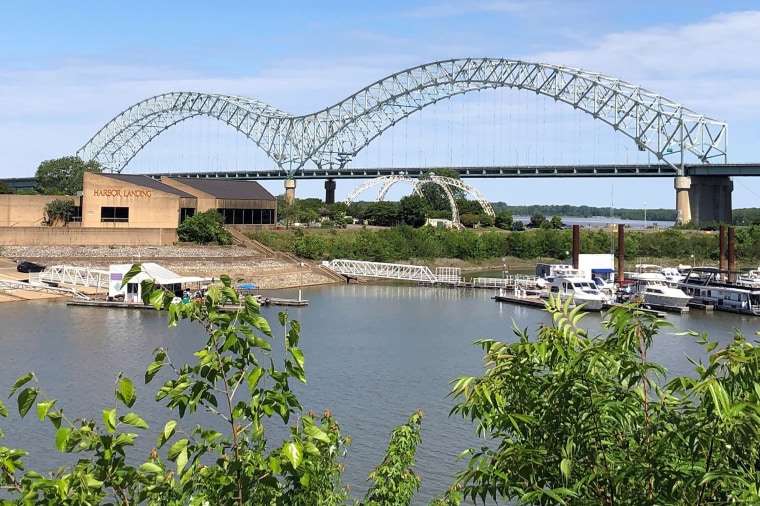A crack in the Interstate 40 bridge in Memphis, Tennessee, highlights some of the nation’s biggest supply chain vulnerabilities, but engineers are hopeful they may be able to at least reopen shipping on the Mississippi River in the next week to alleviate some of the strain.
The Hernando de Soto Bridge, a vital Midwest shipping route that connects Arkansas and Tennessee, has been shut down to thousands of vehicles and barges. Engineers are working on a fix for the 48-year-old bridge but are unsure how drastic the repair effort will be, said Paul Degges, chief engineer for the Tennessee Department of Transportation.
“I'm hopeful in the next day or so we'll be able to be in a position where we can talk to the Coast Guard and say, ‘Hey, we think the bridge is OK. It's got an adequate factor of safety,’ and we can open the river back up to barge traffic,” Degges said Thursday. “So that's, that's step one.”
But it’s too early to determine whether the repairs will take six weeks or six months, he said.
The cracked beam is composed of four blades of steel, and at least two appear to no longer be connected because of the damage. Engineers will have to run multiple mathematical models to assess exactly how damaged the bridge is before mapping out a repair plan, Degges said.

There’s also the added concern about finding the proper high-strength steel material and the time it will take to replace the beam. The steel at the time the bridge was originally completed in 1973 was proprietary to U.S. Steel, and steel is currently highly priced, which brings a scarcity issue to the repairs.
“For us to get the components manufactured, we've got to be able to find a steel facility that can make this particular type of product,” Degges said. “And so we think that there's plates available, but then it has to be cut and fabricated, holes punched in it, where we can bolt everything up.”
Similar repair issues have occurred with smaller bridges in other states, like Kentucky, Pennsylvania and Florida, which will help provide a road map for finding the proper resources.
But the crack in Memphis is just the latest disaster in recent supply chain issues that have highlighted the country’s infrastructure issues. The Mississippi River provides a vital downstream route for farmers who need to transport crops and a pathway from the Gulf for oil and gas companies.
There are currently 44 vessels with a total of 709 barges waiting to pass through the river, according to a tweet from the Coast Guard on Thursday.
Most Americans likely don’t realize how dependent consumers are on river barges and pipelines to transport goods, said Thomas Goldsby, chair of logistics and co-faculty director of the Global Supply Chain Institute at the University of Tennessee, Knoxville.
Every river barge taken out of the supply chain would add about 70 tractor-trailers to roadways, Goldsby estimated.
“Sure, we can move things by truck, but if you've been paying attention to what's been going on with trucking capacity, it's a very tight supply right now,” Goldsby said. “And here we're talking about, you know, tankers and flatbeds and ... subclasses of transportation by truck that are even more constrained.”
Truck and car traffic in Memphis has been diverted to the nearby Interstate 55 bridge, which will help keep roadway shipping at normal levels, though increased congestion may cause delays. If shipping is delayed on the river too long or repairs lead to long-term disruptions, companies may have to consider alternative means for moving their products.

The Hernando de Soto Bridge received a “fair” rating after a September 2019 inspection, according to the National Bridge Inventory compiled by the U.S Department of Transportation. Top scorers are in “excellent” condition, and a “fair” rating is just above “poor.”
About one-third of all U.S. bridges require major repair work or replacement, with more than 46,000 rated in poor condition, an American Road and Transportation Builders Association analysis of 2019’s National Bridge Inventory found.
Railroads are a possible alternative, as companies have been investing millions of dollars in recent years to increase capacity, but it can become costly because railways are almost entirely privatized, Goldsby said.
"To the extent that we could divert freight from the roadways to the railways, it would be super efficient," Goldsby said. "We'd have fewer car, truck accidents and lower emissions, but it is slower and less reliable than moving by truck."
Companies can be hesitant to move toward a slower mode of transportation and are typically only incentivized to move to railroads when gas prices increase. But as bridges continue to age, the U.S. should work to modernize its transportation infrastructure, according to Goldsby.
“You know, transportation is not particularly sexy,” Goldsby said, “but my gosh we really depend on it every day.”
